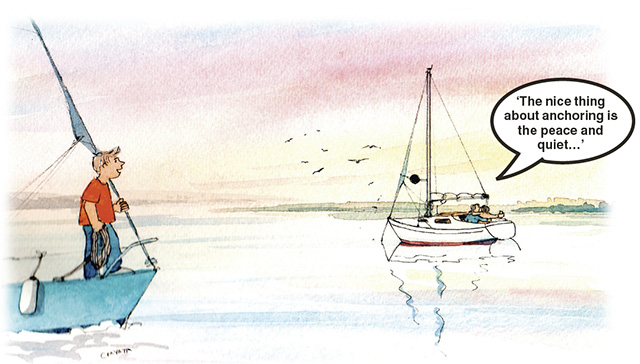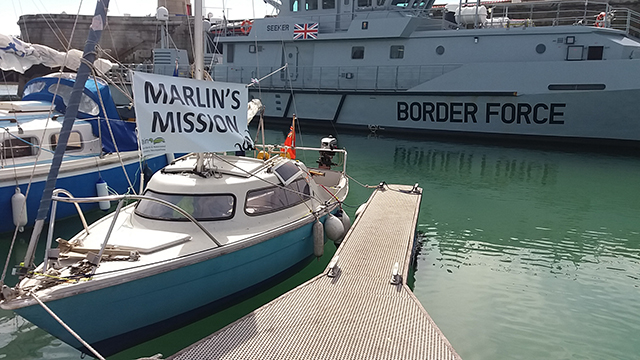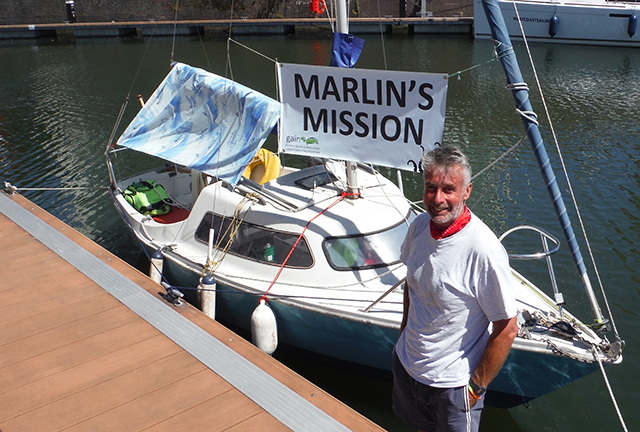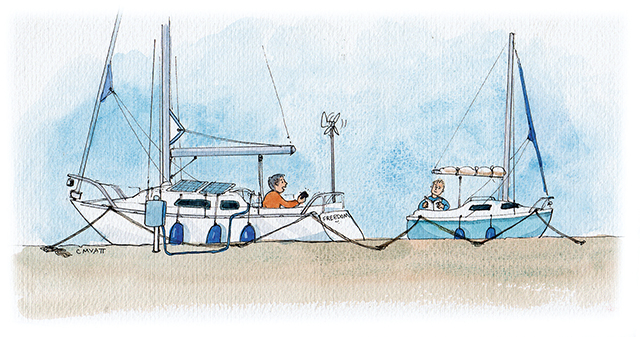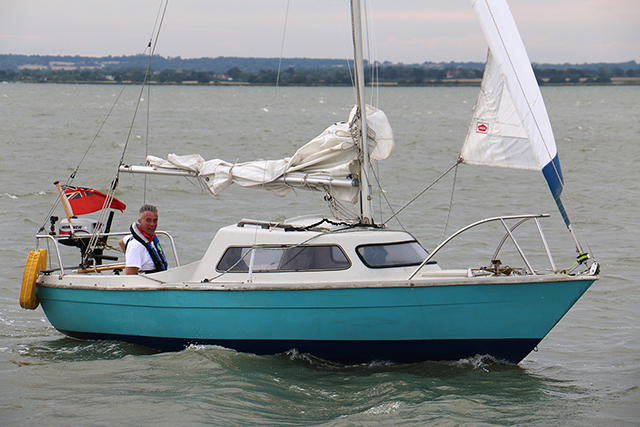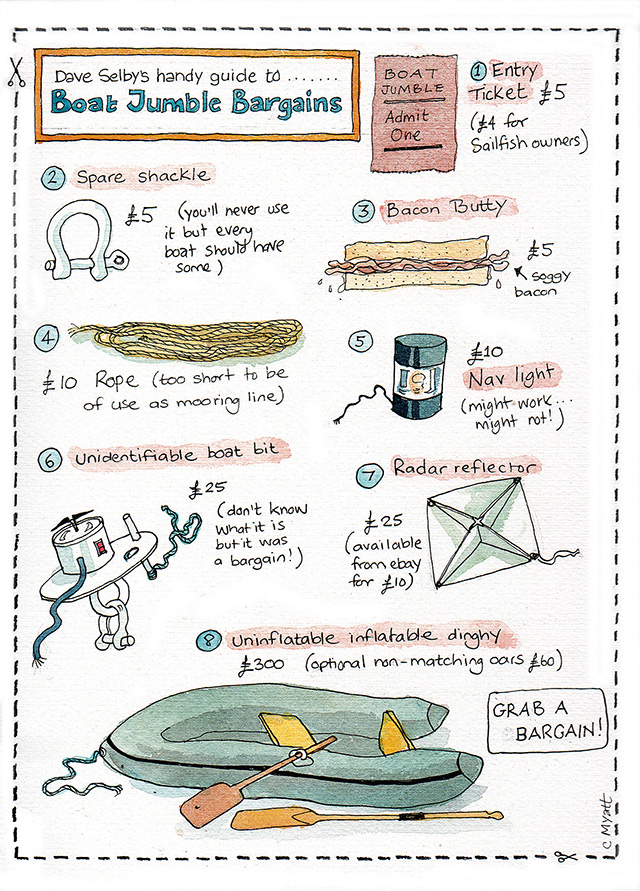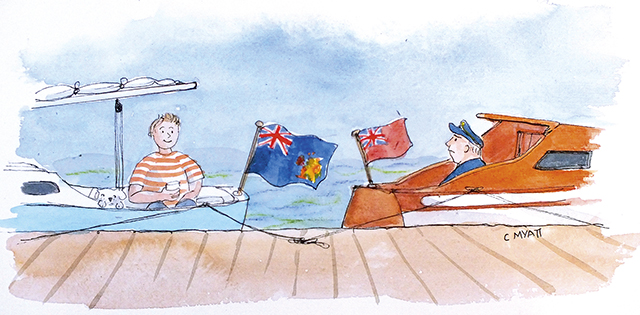A salute to the Sailfish, ‘a pert piece of politburo polyester for the masses’
Everyone knows Ted Heath was a bit of a sailor, but Harold Wilson wasn’t even Prime Minister when he outlined the plans for the Sailfish 18 as he urged Britain to embrace ‘the white heat of technology’ in his famous speech at the 1963 Labour Party conference.
It’s all there in black and white, and I quote: ‘We are redefining and we are restating our Socialism in terms of the scientific revolution. But that revolution cannot become a reality unless we are prepared to make far-reaching changes in economic and social attitudes.’
East Germany responded with the Trabant 601, but British industry took a little longer to step up to the plate. And just as Wilson became Prime Minister for the second time, Henry and Pixie Dale of Maxim Marine presented the Sailfish 18 to the world at the 1970 Earls Court Boat Show.
Here was Wilson’s vision of the future, a pert piece of politburo polyester for the masses. And even more gratifying for Wilson, just the year before Ted Heath had shelled out thousands on his first Morning Cloud, a Sparkman and Stephens 34: if he’d waited a few months he could have bought a Sailfish for a mere £933.
In fact, the Sailfish was remarkably good value. Unlike modern yachts where things such as hull, mast, keel and sails are optional extras, the Sailfish was a complete sail-away package replete with a high-tech polythene fitted washing-up bowl, two fenders, loo, warps, cushions, anchor and chain, cooker, trailer and Ailsa Craig 4½hp outboard. Oh yeah, sails, mast and hull were also included.
And just like Ted Heath’s Morning Cloud, the Sailfish offered six-berth accommodation; it’s just that on the Sailfish the accommodation plan was modelled on a slave ship.
At Earls Court in 1973 the Sailfish won ‘Boat of the Show’ and the Daily Express even devoted a full page to the Sailfish, raving: ‘She’s the carrot that will keep your interest crisp and directional’. I don’t know what that means either, ‘cos Sailfishes don’t come in orange.
But not everyone was so enthusiastic. PBO’s Peter K Poland, former owner of Hunter Boats, builder of the 19ft Hunter Europa, told me: ‘I hated the Sailfish because it was unbelievably good value for money. It was impossible to compete with at that price’. That’s commendation indeed.
Other people loved it, though, and over two decades they built around 850 Sailfishes. My regard for the Sailfish grew enormously as I sailed Marlin round the coast to the Southampton Boat Show.
She’s a tough, capable, great little boat that really looked after me. And at the show I was amazed by the affection in which they’re held; it seemed that everyone who came by Marlin’s Mission either owns one or had in the past.
Boats like these really did democratise sailing. Jeremy Dale, son of builder Henry, is now MD of marine safety equipment company Seasafe, which shared my stand. As a teenager he helped build my very boat and he told me how much care and thought was put into them. I’ve been on modern boats twice the length of a Sailfish where you can literally see sunlight through the hull. Not so, the Sailfish.
Boats like these were built ‘resin-rich’ before cost considerations took over.
And all of that got me thinking. Could the Sailfish also be the boat of today in an age when ownership costs of larger boats are driving people off the water? The original moulds are still in existence, after all, so why not put it back into production?
I felt another of my get-poor-slow schemes coming on until Jeremy pointed out that it would be a get-poor-quick scheme, as a new Sailfish would be skywards of £20,000.
And who would pay that when you can get one for a tenth of the money?
And then I thought again. Chevrolet Corvettes, Daimler Darts, all Lotuses and even some Ferraris have something in common with the Sailfish. So too does the Reliant Robin, come to think of it. They were built out of glassfibre, and all apart from Reliant Robins are acknowledged as classics.
In the car world there’s no stigma to GRP. It’s about time we regarded Sailfishes, Corribees, Pandoras, Westerly 22s, Hunter Europas, Preludes, Skipper 17s, Swift 18s and many more boats of their type, built tough in an age before things were engineered down to a price, as classics.
Just as the Morris Minor and Mini mobilised millions, these glassfibre ‘classics’ were a force for social change. The latest marine industry buzzword is ‘sustainability’, but surely isn’t the really sustainable way of sailing to mobilise this dormant armada rather than use up more un-renewable resources building boats that won’t last as long?
That just leaves the problem of Reliant Robins. Remove one wheel and they could be upcycled into wheelie bins. I think I just saved the planet.
Cockpit table and extra bunks for a Sailfish
Howard Betts had a brainwave to design a versatile cockpit table – then he slept on it
Mission accomplished – Dave Selby’s Mad about the Boat
‘Where’s Bart?’ That’s the question I was asked more than any other after my epic 338-mile two-month voyage to Southampton,…
Hooked, line and sinker – Dave Selby’s Mad about the Boat
Why the art of anchoring is something to be shared, like it or not
DIY Doctor Dave – Dave Selby’s Mad about the Boat
Emboldened by the lack of response to his first PBO practical article, Dave pledges to reveal how to remove your…
Dave Selby Blog 6: Setting sail from Dover
I hope you’ll join me for the next leg of Marlin’s Mission, either in your boats or aboard Marlin, says…
Not such a mug now, eh? – Dave Selby’s Mad about the Boat
If you’re simultaneously a bit shallow yet out of your depth when it comes to echo-sounders, a cup of tea…
Sailfish challenger Dave Selby reaches London on his ‘last legs’
PBO's Dave Selby, who is battling a rare nerve illness, won a tense race against time to sail his 18ft…
Ohm improvements – Dave Selby’s Mad about the Boat
Formerly ohmless and happy, ‘analogue Dave’ is now going digital
Dave Selby Blog 5: Back home again – but not for long!
Dave Selby's 300-mile voyage in a Sailfish 18 has begun but some 'mucky weather' is hampering progress...
Dave Selby sets sail on Marlin’s Mission
Dave Selby sets sail on his 18ft Sailfish Marlin on a 300-mile voyage to the Southampton Boat show to promote…
Blog 3: Dave Selby gets Marlin’s trailer road-ready
PHEW! In fact DOUBLE PHEW! Marlin’s in the boat shed at last, writes Dave Selby sorts out his trailer and…
A whacking great outlay – Dave Selby’s Mad about the Boat
The real cost of engineering solutions to a problem that didn’t exist in the first place, muses PBO columnist Dave…
Dave Selby’s charity challenge gains fresh momentum
The Sailfish community has mobilised to help Marlin’s Mission get afloat safely, as Dave Selby prepares to head off on…
A racing uncertainty – Dave Selby’s Mad about the Boat
Not entirely sure if he has what it takes to become a competitive sailor, Dave issues a treatise on the…
The application of remorse code – Dave Selby’s Mad about the Boat
At boat jumbles, it would appear to be customary for buyers and sellers alike to feel hard done by, says…
My supply of ensigns dried up – Dave Selby’s Mad about the Boat podcast
Dave provocatively contends that an ensign can make a serviceable tea towel – and vice versa
Classic yacht Altricia damaged by arson attack
A restored classic yacht which was a feature boat at this year’s London Boat Show is back under the care…







